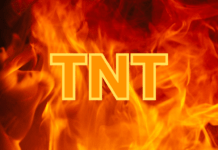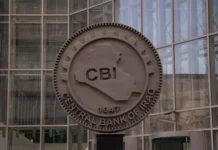TNT:
Harambe: Zimbabwe gold-backed digital token (ZiG) becomes operational | The Insider (10/5/23)
The Zimbabwe gold-backed digital coin, known as ZiG, became operational today as a means of payment but central bank governor John Mangudya said it was not a currency.
The ZiG is at par with the physical gold coin and will be informed by the international price of gold.
The central bank has enlisted external auditors to validate the availability and adequacy of gold to back the ZiG at any time.

Harambe: Zimbabwe: End of an ‘Error’ – Market Rejects $50 Mbuya Nehanda Note As Inflation Soars | allAfrica.com (10/6/23)
Vendors and some retailers in Harare are now rejecting the ZW$50, introduced in 2021 by Reserve Bank of Zimbabwe (RBZ) Governor John Mangudya.

The note’s rejection is not surprising as it was now worth less than US$0.10 on both official and black market exchange platforms.
One needed 80 of the ZW$50 notes to equal one US dollar.
Vendors in some of Harare’s high density suburbs and tuckshop operators in and around the capital said it was no longer possible for them to store large wads of the notes hence moves to reject their use.
“We are no longer accepting the Mbuya Nehanda note,” said a vendor in Dzivarasekwa Extension.
“The note is not being accepted in Mbare where we buy our goods for resale and it does not make sense that we use it here.
“It is of no use now, takes a lot of space to keep while being worthless at the same time. Imagine how much of it and where I have to keep it if I want to buy goods which are equivalent to US$100.”
The note was monikered Mbuya Nehanda because of its motif, which is that of the legendary Spirit Medium of Zimbabwe’s First Chimurenga (First Uprising against settler whites) in the 1890s.
The next highest note is the ZW$100, which much like the ZW$50 cannot even buy a lollipop. One needs about five of them to buy a US$0.10 sweet.
According to experts Zimbabwe’s inflation currently stands at 284.94%, the highest in the world, even higher than troubled Venezuela (210%).
Prices of basic goods and services have more than tripled in the past two years, a situation that has been made worse by stagnant wages, especially for government employees.
The RBZ and Zanu PF-led government blame ‘economic sanctions’ and a host of ‘third force’ elements targeting Zimbabwe’s economy.
“There are still supermarkets taking the ZW$50 so those who still have them can use them there not here,” a tuckshop owner told NewZimbabwe.com.
“Everyone prefers the US dollar and despite what is said by the government regards our currency we all know where it stands in terms of value regionally and even locally.”
The RBZ pumped $360 million worth of the denomination at inception, promising to pump more into Zimbabwe’s economy gradually.
President Emmerson Mnangagwa is on record saying Zimbabwe’s local currency is the strongest in the SADC region despite South Africa’s Rand, Botswana’s Pula, Zambia’s Kwacha and Namibian dollar all experiencing notable stability.
Zimbabweans have in the past rejected the ZW$1, ZW$2, ZW$5, ZW$10 and ZW$20 notes due to massive devaluation.
The country has a history of rampant inflation at whose height it used trillion dollar notes that are still public spectacle.
https://allafrica.com/stories/202310060032.html





